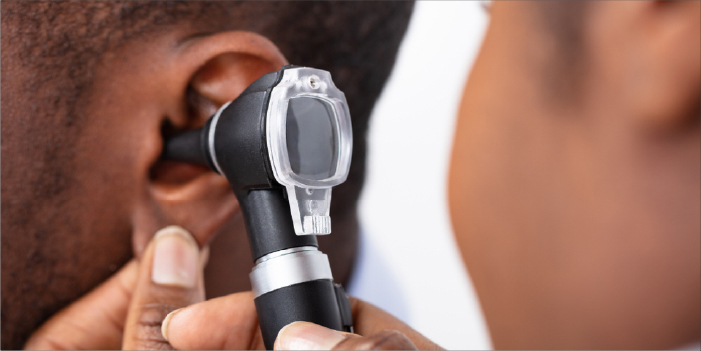
Audiometry: All the information you need to know
Have you ever wondered why you have to take hearing tests? Audiometry procedures are a vital aspect of the hearing testing process, as they measure how well your ears respond to various sounds.
Understanding how these procedures work can help ease your nerves while taking the audiometry test. This article will give in-depth audiometry information and how to prepare ahead of time to get the most out of your hearing test appointment.
What is Audiometry?
Audiometry is a general term used to describe a battery of tests designed to assess hearing function. We also know it as Audiogram. These tests are most often used to screen patients who complain of hearing damage and help check patients with dizziness or vertigo and any patient who has suffered an injury that may affect hearing (i.e., head trauma).
Audiometry Types and Uses
An Audiologist carries out many tests in a comprehensive hearing evaluation. These include:
- A hearing test by air conduction measures how well both ears can hear loud and soft sounds.
- Pure tone audiometry (PTA): This measures hearing sensitivity at different frequencies and is the basic hearing test. The audiologist can conduct it using an audiometer, which produces sounds of varying frequency and intensity and measures the patient’s response to each sound.
- Bone conduction testing: The audiologist uses a vibrating device placed on the mastoid bone behind the ear to check for wax or fluid blockage in the outer or middle ear.
- A speech test determines if a patient can understand speech at different volume levels and pitches, with or without background noise. Speech testing often involves repeating back words or sentences in increasingly difficult conditions (e.g., louder speech from across the room or whispered speech in a noisy environment).
- Tympanometry: Tympanometry is a test that uses sound waves to evaluate the condition of the middle ear and establishes if there is fluid, a perforated eardrum or abnormal movement of the tympanic membrane.
Why Do I Need to take an Audiogram?
While a hearing test is not very common, the health care provider may refer some people to an audiologist for an audiogram. It is especially vital if you have tinnitus (ringing in an ear or other noises) or have a family history of hearing loss. The benefit of having an audiogram performed is to help identify potentially dangerous changes in your hearing or even diagnose a condition, such as Ménière’s disease, shown by vertigo attacks.
How is Audiometry Conducted?
This simple test will allow your hearing specialist to evaluate your hearing based on a scale of pure tone thresholds. It measures how well you can hear different pitches of sound at different volume levels. It works by administering specific frequencies of pure tones at different volume levels while listening through headphones. Audiologists plot the results as an audiogram, which looks like a series of wiggly lines across graph paper. The shape of these lines reveals whether you have any hearing loss (or if there are other problems).
A normal audiogram shows healthy hearing ability in all ranges tested. We may need further testing if specific pitches are hard to hear or if your chart shows dips or peaks. While it’s normal to feel nervous about having your hearing tested, don’t forget that audiometry can help determine the cause of your hearing loss and get you the treatment you need to prevent further damage to your ears and balance mechanism.
How to Prepare for Your Audiogram
If you plan to get an audiogram, there is nothing special you need to prepare.
Procedures to Take Care of Your Ears
Caring for your ears is very important as they can help you avoid hearing loss, which can be permanent if not taken care of in time.
With that said, here are some procedures that you should do for your ears:
- Take regular breaks from the noise
- Earwax removal
- Don’t use cotton swabs
- Stop using Q-Tips
- Avoid using ear candles
- Give the eardrum time to heal
- Reduce the use of headphones and earbuds
How to Prevent Noise-Induced Hearing Loss When Working in a Loud Environment?
Noises at 85 decibels and above can cause damage to your ears, whether you are in a nightclub or simply working in an environment with high levels of background noise. A good rule of thumb: If it’s loud enough to make talking difficult, it could damage your ears. OSHA recommends using hearing protection otherwise, noise can cause permanent damage in as little as one minute.
Noise-induced hearing loss often results in tinnitus (ringing in your ears), lasting for weeks, months, or even years after exposure to loud noise. It can lead to difficulty concentrating on conversations when there is any background noise. You may also have trouble distinguishing between certain consonants, especially sounds. To avoid permanent damage to your hearing, do this:
- Use ear protection if possible
- Take regular breaks from loud noises.
- See an Audiologist
In conclusion, noise-induced hearing loss usually occurs gradually over time, so it’s essential to protect your ears as soon as possible. Loud noises may further harm your hearing if you already have some damage. You should get an audiometry test at Medbury’s life check centre if your hearing suddenly changes for no apparent reason.
